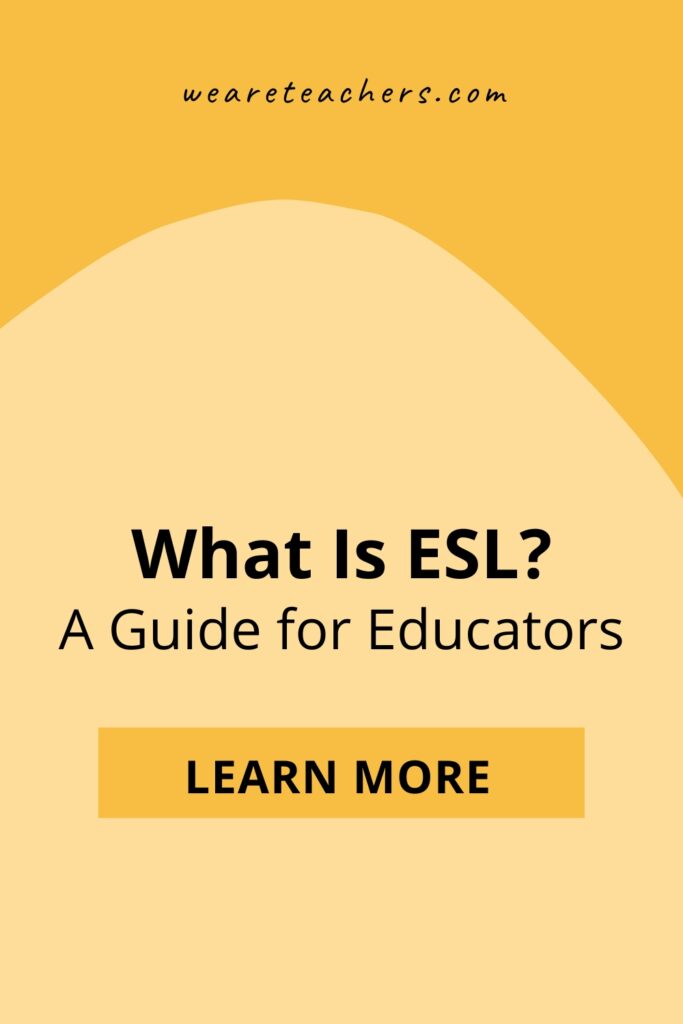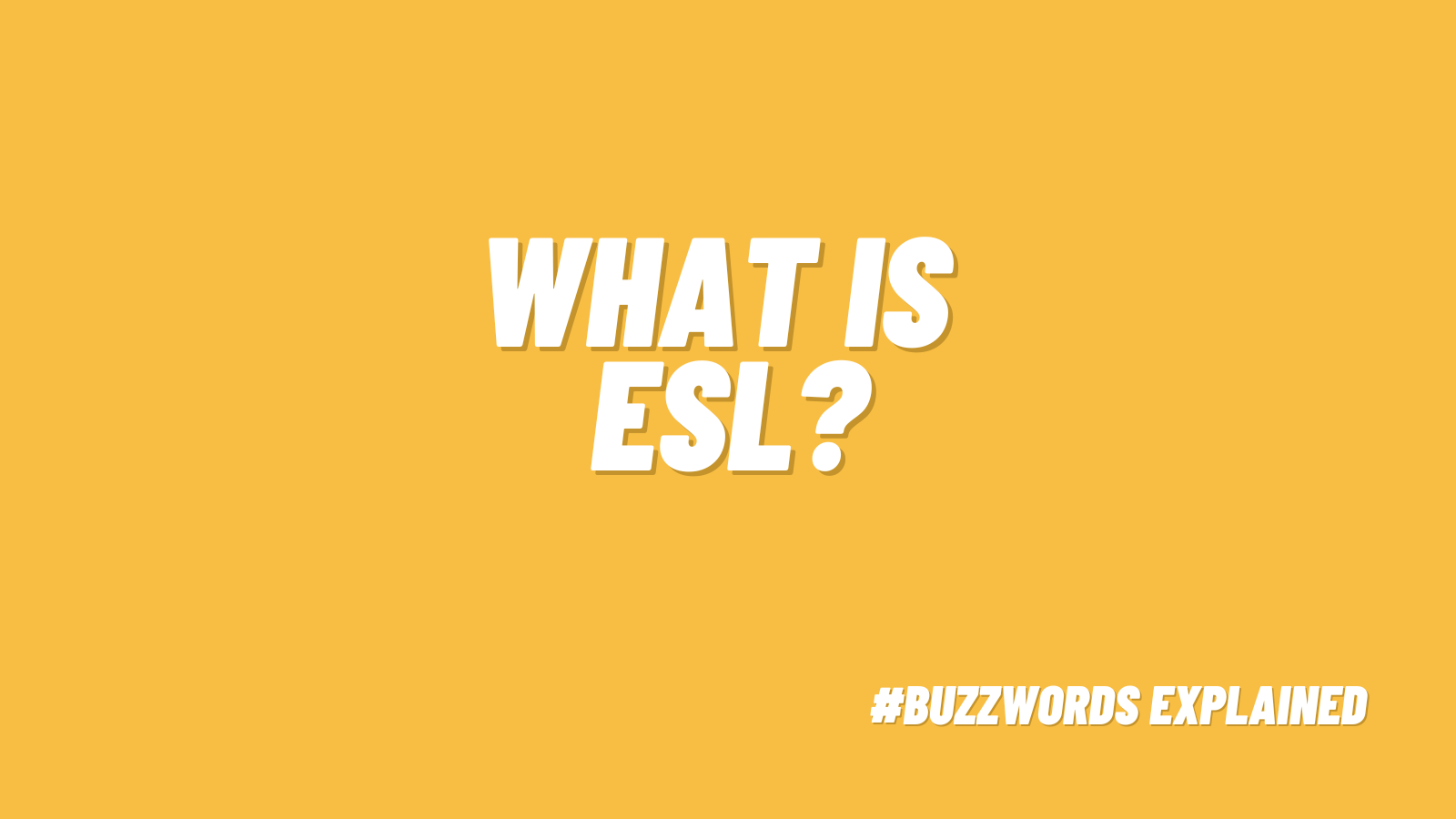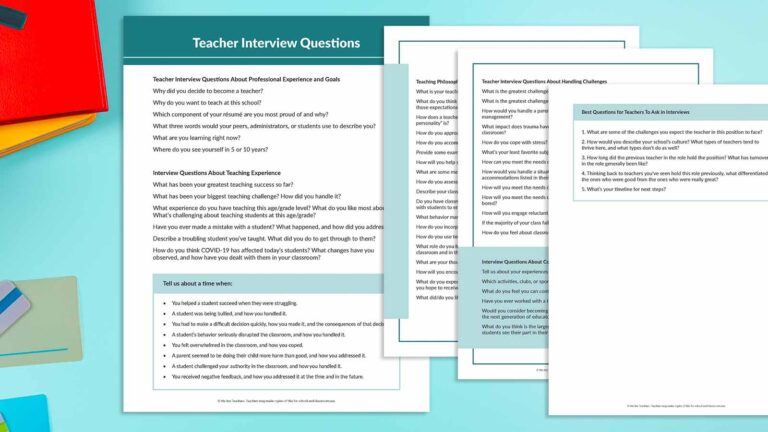Now more than ever, we have a responsibility to help students feel welcome in the classroom. Language is one of the ways we can do that. But we have to provide quality programs to make it happen. By offering ESL (English as a second language) or ELL (English language learner) support in schools, we can help non-native English speakers get the instruction they need to be successful. So, what is ESL exactly? And how can we ensure we are offering equal opportunities for learning? Read on as we define what ESL is and how to support ELLs in the classroom and beyond.
What is ESL?
Simply put, ESL comprises programs that teach English language skills to non-native speakers. ESL can also refer to a methodology or curriculum specifically designed to increase English language proficiency for ELLs. These programs include instruction in vocabulary and speaking as well as reading and writing.
Here’s a summary of important ESL concepts to know:
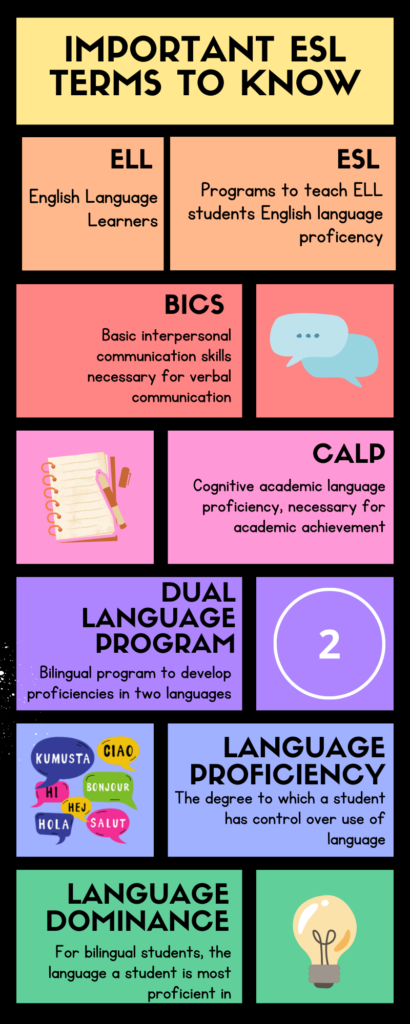
ESL instruction is almost always done in English and not in any other language. This is different from EFL, which stands for English as a foreign language. ESL takes place in English-speaking countries, whereas EFL instruction is used in countries where the predominant language isn’t English. ESL programs are also federally funded and typically involve pulling students out of the classroom. Teachers who work with these students are typically required to hold a special certificate. This is called TESOL, or “teaching English to speakers of other languages.”
There are two main elements of ESL instruction: BICS and CALP. BICS stands for basic interpersonal communication skills. This refers to the language ability required for verbal face-to-face communication. CALP is short for cognitive academic language proficiency, which is what is required for academic achievement. ESL programs use both components as part of the curriculum. They also focus on grammar, vocabulary, and pronunciation to enhance English language skills. BICS are easier to learn and often develop first, while CALP takes much longer to learn.
Is the term ESL outdated?
Here’s a caveat to our definition of ESL. While we use “ESL” because it’s still a commonly used acronym, we are also aware of its limitations as an inclusive term. Since ESL refers to learning English as a second language, it doesn’t encompass all English learners and doesn’t accurately reflect their linguistically diverse backgrounds. ESL implies a linear progression of language learning, and some ELL students are multilingual. Often, students may be learning English as a third or even fourth language. ELA, or English language acquisition, is another term we can use to more appropriately describe the process of learning English.
We can also use the acronym ESOL, English for speakers of other languages, to identify all students learning English. When possible, we also refer to ESL instruction as ELL programming, because it’s a more accurate and inclusive definition. It also emphasizes growth rather than focusing on deficiencies. We believe that understanding these distinctions is so important and that we have a responsibility to try to represent the experience of all learners.
To stay up-to-date on these definitions and learn more about students’ rights, check out these helpful ELL 101 tips.
Who qualifies for ESL/ELL instruction?
There is no such thing as a typical English language learner. Students may be immigrants or they may have been born in the United States. In fact, according to a survey from 2016, 72% of school-age students who qualified as English language learners were born in the United States. They might be multilingual and also come from various cultural backgrounds and socioeconomic statuses.
While ELL students are all unique, there are specific ways we can support them. Learning as much as we can about our students helps facilitate connection and can increase student buy-in as a result. Understanding a student’s family and background is vital too. Just like all students, ELL students want to belong and have fun in school, but they might need some extra support to do so. And rather than think of them as starting from a deficit, it can be helpful to reframe our perspective and focus on the gifts they can bring to our classroom. This video from Colorín Colorado reminds us of just how much ELL students can offer.
Ways To Support ELL Students
Let’s face it, learning a foreign language is hard. But we can all find ways to help support ELA for our students. The more we can understand the ins and outs of teaching English to non-native speakers, the more we can increase their chances of academic and social success, from our youngest ELL learners to those pursuing higher education. Here are our top suggestions for how to support ELLs in any setting.
Build relationships and celebrate diversity
For students to grow both socially and academically, they must feel comfortable and secure in the classroom. One way to support ELLs in this way is to recognize and honor cultural identities. Creating an environment for all students to feel appreciated for who they are helps establish a strong classroom community and fosters connection and engagement.
One great way to establish these types of successful relationships is to offer home visits. Seeing students in their home environments can be so helpful for establishing connections and honoring students’ unique backgrounds. The more we can get to know and understand our students’ identities, the more they will invest in the classroom community and be motivated to learn.
The video below from Colorín Colorado offers a helpful reminder of why it’s so important to build strong relationships with ELLs.
Offer plenty of time and practice
Developing language skills takes time, and we can’t rush it. Students may take years to reach the level of English proficiency they need to be successful in school. Nevertheless, we can offer a variety of opportunities for our students to support their emerging skills. The more peer interactions we can provide, the better. Partner or small-group work is great for facilitating oral language skills and gives us a better sense of how ELLs are progressing in their language development.
Continue to emphasize native language
With more than 1 billion English speakers in the world, learning English is a priority for students. But our overarching goal for ELLs is that they become bilingual or multilingual. So we have to encourage ELLs to continue to speak in and use their native languages. One way to do this is to encourage students to use their native language as part of the learning process. Larry Ferlazzo, an ELL educator and popular blogger, suggests using an instructional strategy called “preview, view, review.” The idea is to introduce new topics to students in their home languages by using different online resources. Then, teach the lesson in English, and finally, summarize the content again in their dominant language.
Offer extra wait time
When we pose a question to the class, we know it’s good practice to give sufficient wait time before calling on someone to answer. This is harder than you might think! It turns out we tend to overestimate how long we’re actually waiting. Studies show that we typically wait just one or two seconds before calling on students. For ELLs, this wait time is even more critical. When we offer extra time, we give students more space to process and translate their thoughts into English. Considering all the steps required in this process, we have to be extra mindful of how we are encouraging them to participate.
Engage families
Every parent is eager to hear positive feedback about their child and learn about what’s happening in the classroom. The more communication you can have with families, the more likely they are to get engaged in their child’s learning. When you reach out and make them feel comfortable, parents will be more willing to ask questions and bring up concerns on their end.
The video below suggests that families may have varying availability and accessibility, so we might have to get creative with how we communicate with them.
Differentiate and extend learning
Finding differentiated and unique ways to teach the same concept is an instructional practice that benefits all learners. For ELL students, it gives them multiple opportunities to learn a topic through different modalities. A student may be stronger in one area than another, and using different tools can also help reinforce learning through repetition. Incorporating a variety of activities like listening, writing, and speaking on the same topic can be tremendously helpful for ELLs.
Try one thing at a time
So much is new for ELLs. The following video is a helpful reminder to take things slow and focus on one new concept at a time.
Books and Resources
Colorín Colorado
This website is a fantastic resource for everything you need to know about how to teach English language learners.
Learn more: Colorín Colorado
Literacy Foundations for English Learners
Author Elsa Cárdenas-Hagan is a wealth of knowledge on the topic of ELLs and using research-based practices to support their learning. She has many resources available online as well. Check out this podcast featuring tips specific to literacy and the science of reading for ELL students.
Buy it: Literacy Foundations for English Learners at Amazon
Activities To Boost Language Skills
Readers Theater
Using readers theater in the classroom is a great way to support ELL students’ literacy and language skills. Rereading a text many times, especially aloud, increases understanding, vocabulary development, and fluency. It can help students visualize what’s happening in a story as they act it out. It’s easy to differentiate by giving bigger or smaller parts to students based on their language skills. As students increase their skills and can showcase them, it can be a great confidence booster! For more tips and suggestions, check out these helpful steps for creating scripts and how to use them for younger students.
Quick Write
Writing can be overwhelming for ELL students. An activity like a quick write, where students try to write as much as they can for five minutes, might help alleviate some of the anxiety. The goal is to write on a specific topic for five minutes, not worrying about spelling or if they run out of things to say. At the end, have students jot down how many words they wrote and keep track of their progress over time. Check out this post for more ideas on how to improve writing skills for ELL students, which will in turn improve their oral language skills.
Circle Chat
Check out this fun, interactive activity where students take turns talking with partners. It’s a great way to boost communication skills and get everyone engaged.
Graphic Organizers
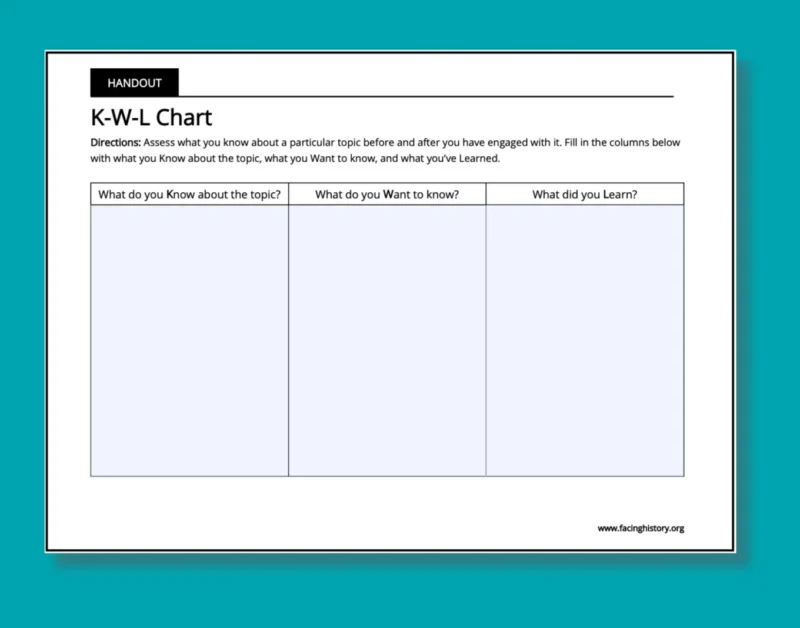
Graphic organizers can be great tools for visualizing concepts and making topics more concrete for ELL students. They can also help support vocabulary development. We like this K-W-L chart from Facing History & Ourselves, but there are so many options for all types of graphic organizers out there.
Do you work with ELL students? Come share your experience in the We Are Teachers HELPLINE group on Facebook.
Plus, check out Ways To Build ELL Vocabulary Skills.
